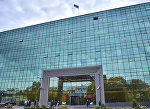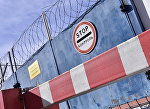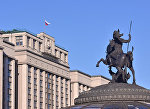MOSCOW, October 10 - RAPSI, Ingrid Burke. The International Cycling Union (UCI) announced today that it will consider the legal and procedural issues arising from the US Anti-Doping Agency’s (USADA) decision to impose heavy doping sanctions against world champion cyclist Lance Armstrong, and will respond within 21 days.
Specifically, the USADA stripped Armstrong of all titles he had won since August 1998 and banned him for life from the sport.
The UCI initially remained tight-lipped about the USADA decision, thus leaving their recognition of the latter’s decision hanging in the balance. Shortly after the USADA sanctions were made public, the UCI pointed out that: “Article 8.3 of the World Anti-Doping Code (WADC) states that where no hearing occurs the Anti-Doping Organisation with results management responsibility shall submit to the parties concerned (Mr Armstrong, WADA and UCI) a reasoned decision explaining the action taken.”
In late September, more than a month later, the UCI broke its silence for purposes of publicly chiding the USADA on account of its failure to produce the anticipated decision in a timely fashion. UCI President Pat McQuaid charged, “The UCI had no reason to assume that a full case file did not exist but USADA’s continued failure to produce the decision is now a cause for concern… It is over a month since USADA sanctioned Lance Armstrong. We thought that USADA were better prepared before initiating these proceedings.” Noting the USADA’s excuse that it was still gathering evidence against Armstrong at the time, the UCI pondered, “It is at very least unusual that USADA would still be gathering evidence against a person after it has found that person guilty.”
The USADA finally delivered its reasoned response this Wednesday in the form of a scathing 200+ page indictment painting Armstrong as something of a monster. The report, replete with allegations of drug trafficking, lies, threats, witness intimidation, and Swiss bank accounts, centers primarily on the allegation that Armstrong’s lust for victory could only be satiated by the creation of an illicit drug ring in the form of a pro-cycling team.
Summarizing its findings, the USADA explained, “Lance Armstrong himself has said that the story of his team is about how it ‘evolved from . . . the Bad News Bears into the New York Yankees.’ However, as demonstrated in this Reasoned Decision, [his teams’ achievements] were accomplished through a massive team doping scheme, more extensive than any previously revealed in professional sports history.”
The testimonies of 11 of Armstrong’s former teammates, as well as those of numerous other sources close to him, provided the basis for the USADA’s conclusion that “Mr. Armstrong’s career on the USPS/Discovery Channel Pro Cycling Team was fueled from start to finish by doping.”
The reasoned decision claims that Armstrong did not act alone. His doping years were supported by a “small army of enablers, including doping doctors, drug smugglers,” and more.
The USADA officially imposed the sanctions against Armstrong on the basis of the following charges: use or attempted use of prohibited substances; possession of certain prohibited substances; trafficking of certain prohibited substances; administration or attempted administration of certain prohibited substances; assisting, encouraging, aiding, abetting, covering up, and being otherwise complicit with anti-doping violations.
The agency further noted that the severity of the sanctions imposed against him was justified by various aggravating circumstances, including conspiracy and inspiring others to undermine the anti-doping rules.
The substances and methods at issue included erythropoietin, testosterone, cortisone, and blood transfusions.
The report charges that Armstrong attempted to silence anyone who might expose his illicit activities with threats and physical violence. Italian cyclist Filippo Simeoni said that after he testified against the doctor suspected of having supplied many of these illicit substances, Armstrong told him, ““You made a mistake when you testified against Ferrari . . . I can destroy you.”


